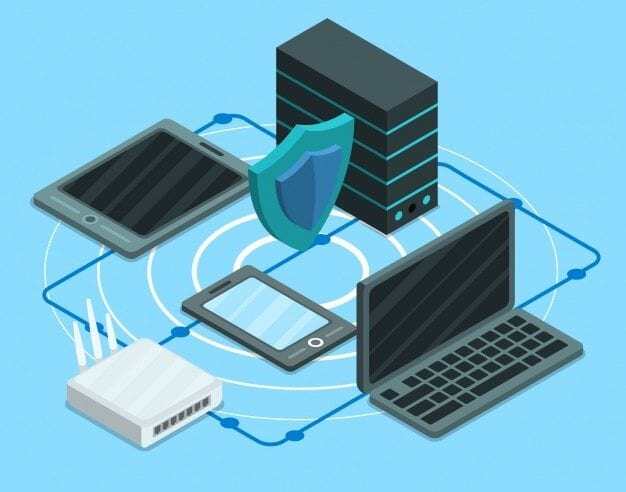Overview
Software applications are moving from legacy enterprise software to SOA, SaaS integration and APIs, chasing agility and operational efficiency. Most of the businesses which built their IT infrastructure over generations are now addressing huge gaps in operational performance which are formed through changing business needs.
Many businesses have strategies to build rich client/mobile applications, move services to the cloud or simply reduce long-term costs by modernisation, but information for these strategies is tied up in legacy systems. If organisations are to implement their strategies, they will require a solution to connect legacy systems with applications, data, partners and customers to create a seamless, high performing organisation.

Legacy Systems Problems
Legacy systems are technologies, computer systems or applications that were implemented to solve business challenges in the past. Usually, they are not fast, scalable, or flexible compared to the present generation systems, and legacy systems are often only maintained because they have become critical to some areas of business operations and so cannot be easily ignored, eliminated or replaced.
The larger and older an organisation is, the more likely it will be that:
- Present generation analysts and/or programmers do not fully understand their legacy systems, which makes them difficult to maintain.
- Implementation and usage is largely undocumented.
- Expertise to monitor and maintain them is close to nil.
- Connections to other SaaS or on-premises applications are extremely difficult due to lack of clearly defined / accessible / implemented API.
- There is no clear path for migration.
- Massive maintenance expenses are being incurred.
Solutions
The challenges and issues faced by legacy systems can be mitigated by multiple methods in order to reduce the impact on current business objectives.
Maintain: In some scenarios, it is unwarranted to make any fundamental change to a legacy system, especially if that system is supporting the organisation with high quality and high business value. In such cases, it is best to simply maintain the legacy system.
Replace: If possible, an organisation could replace low quality or low business value systems and modify business processes so that the legacy systems are no longer necessary.
Modernise: Finally, an organisation could implement simple, non-invasive changes that enable the required functionality. Systems that are of low quality, but high business value are typically expensive to maintain, should be modernised.
Legacy Systems Modernisation
Modernisation is an attractive (low-risk and less-intrusive) alternative to replacing legacy systems. There are several articles on how to expose legacy systems with “Service Oriented Architecture” (SOA). But, SOA will not fully address the critical need for an intermediary communication layer that exposes and brokers connectivity from legacy systems, formats, and transport protocols to new systems and applications. Legacy systems modernisation has many advantages which are mentioned below:
- Lower Maintenance Costs:One of the problems of legacy code is that it often runs on outdated hardware or other platforms that may no longer be available or require extensive maintenance; these costs can be reduced with modernisation.
- Easy addition of new features:Legacy modernisation will allow new features to be added without risk of breaking a critical linkage within the legacy code, both enhancing speed of delivery and lowering the cost of adding new features.
- Free critical engineers:Often experienced and critical engineers are trapped supporting out of date legacy code. Modernisation will brings the software, documentation, platform and language up to currently available standards, allowing other engineers to take on the role of supporting the system.
- Reuse critical assets:Legacy software contains features and functionality which cannot be easily replaced by a modern system. Modernisation not only restores the software to a ‘just released’ state ready for new features to be added and an extended life, but it also captures the existing logic of the legacy system as a series of designs, architectures, models, documentation and source code. These assets can be easily ported and reused in other software systems
Modernisation can bring in many benefits to the organisation when it is implemented well. But as with all things, there are certain points to be careful of.
Integration Pitfalls
Case 1: Some integration solutions are complex and expensive to deploy and it would be more efficient to simply replace the legacy system.
Case 2: Some solutions lack robust connectivity to the niche interfaces provided by legacy systems. Organisations get trapped by selecting an over-engineered solution for legacy modernisation. Rather than modernising a single or small number of legacy systems, these projects results in new business architecture which pose a different set of problems.
Case 3: Other integration solutions fail to account for the future needs of the business. Failure to select a solution that can enable legacy modernisation as well as enterprise mobility on a single platform limits future flexibility.
When done properly, with a suitable integration platform and also a suitable design, legacy modernisation can offer impressive results with minimal impact on the business processes delivered by the legacy systems.
Conclusion
There are many Integration Solution providers having products or platforms for seamless integration of legacy systems to new business needs. It is highly difficult to determine which offers the best solution. For successful application integration, one needs strategic thinking, operational foresight and due diligence.
If you would like to find out more about how Digital Transformation could help you make the most out of your current infrastructure while enabling you to open your digital horizons, do give us a call at +44 (0)203 475 7980 or email us at Salesforce@coforge.com
Other useful links:
8 questions to answer before starting a digital transformation overhaul
Related reads.


About Coforge.
We are a global digital services and solutions provider, who leverage emerging technologies and deep domain expertise to deliver real-world business impact for our clients. A focus on very select industries, a detailed understanding of the underlying processes of those industries, and partnerships with leading platforms provide us with a distinct perspective. We lead with our product engineering approach and leverage Cloud, Data, Integration, and Automation technologies to transform client businesses into intelligent, high-growth enterprises. Our proprietary platforms power critical business processes across our core verticals. We are located in 23 countries with 30 delivery centers across nine countries.



